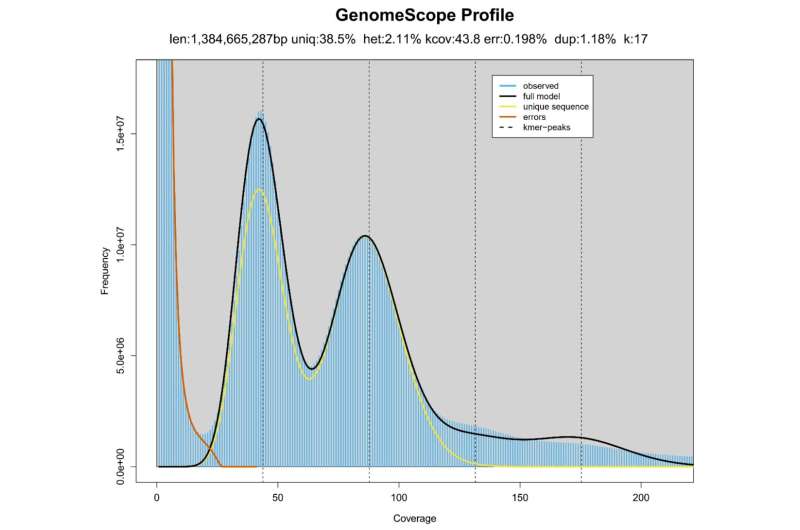April 11, 2023 report
This article has been reviewed according to Science X's editorial process and policies. Editors have highlighted the following attributes while ensuring the content's credibility:
fact-checked
peer-reviewed publication
trusted source
proofread
Chromosome-level genome assembly of sea cucumber reveals details about its Cuvierian organ

A large team of marine, molecular and genetic biologists affiliated with a number of institutions in China has conducted what they describe as a high-quality, chromosome-level genome assembly of the black sea cucumber (Holothuria leucospilota). In doing so they have learned more about its Cuvierian organ.
In their paper published in Proceedings of the National Academy of Sciences, the group describes how they studied the sea creature's genome and the proteins that the Cuvierian organ makes, and what they learned by doing so.
The black sea cucumber is a species of marine invertebrate. As its name suggests, it looks somewhat like a black cucumber. It lives in the Indo-Pacific region and survives by eating organic matter that sinks to the seafloor. But what sets the cucumber apart from most other creatures is its Cuvierian organ—a mass of fibers that look like white strings.
The cucumber ejects the organ from its body when disturbed by a predator and then grows a new one. The stickiness of the strings prevents the predator from attacking. It was only upon closer examination of the Cuvierian organ that it was determined to be an organ, rather than simply a mass of sticky protein.
It has also been noted that the unique defense mechanism has proven to be so effective that the black sea cucumber has come be known as a dominant species. In this new effort, the team in China sought to learn more about the organ to better understand how the creature came to be so dominant.
To learn more, the team analyzed the sea creature's genome, focusing specifically on genes related to its Cuvierian organ. They then used a computer program called AlphaFold to predict which sorts of proteins would be encoded by different genes they found. In so doing, the team was surprised to find that some of the proteins were of the kind typically found on receptor cells in other creatures.
They also found that the stringy look of the organ was not due to sequences of amino acids, such as those found in spider thread. Instead, it was due to long-chain proteins. The research group also found that the stickiness was due proteins similar in nature to amyloids.
More information: Ting Chen et al, The Holothuria leucospilota genome elucidates sacrificial organ expulsion and bioadhesive trap enriched with amyloid-patterned proteins, Proceedings of the National Academy of Sciences (2023). DOI: 10.1073/pnas.2213512120
Journal information: Proceedings of the National Academy of Sciences
© 2023 Science X Network





















